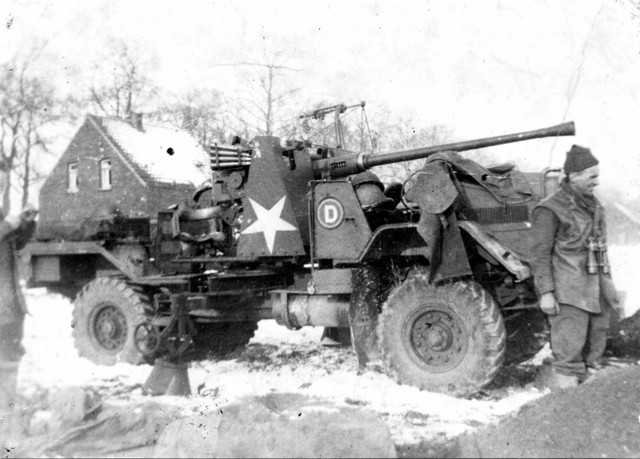Hmmm… well, they all look very similar 
An Oldsmobile perhabs?
Edit:
Ok, I´ve got it 
It is Australian-built Chevrolet Station Wagon.
This car was used by the Australians in North Africa.

Hmmm… well, they all look very similar 
An Oldsmobile perhabs?
Edit:
Ok, I´ve got it 
It is Australian-built Chevrolet Station Wagon.
This car was used by the Australians in North Africa.
Correctomundo!
Australia didn’t have a car manufacturing capacity before or during WWII. It imported fully built cars but also chassis(?s? - what is the plural of chassis?) and motors to which local body builders added bodies which weren’t necessarily the same as those used in the country of origin.
Although I don’t know the history of this vehicle, I suspect it might have been a local body added to a Chev chassis.
Your turn.
Thanks for the info
My question:

That looks like a bi-motor 4X4 design from the German manufacturer Vidal & Sohn Tempo-Werke GmbH such as the Tempo G1200. It’s certainly not the latter, but it could be a prototype.
Later Edit: Nevermind, it’s actually a Czech Tatra V-809 from 1940…
Correct wingsofwrath :),
It is a Czechoslovakian TATRA V-809 produced in Kopřivnice.
Your turn!
Ok then, what exactly are we looking at in this picture?
For bonus points, can you tell which army?

Some Austro-Daimler ADMK Motorkarrette Mulus crossing the river.
This vehicle were used by the Austrian Army.
Woj, you are absolutely correct in your identification.
You may proceed.
The “bonus points” question has a bit of a twist to it though. This picture represents vehicles of the Romanian army, during manoeuvres in the summer of 1938. Until a friend of mine found this picture in the archives about six months ago, nobody ever knew we had used ADMKs…
Well, what the surprise. I knew nothing about the service of ADMK´s in the Romanian Army :shock:
Did the Romanian Army buy them or got from the Wehrmacht after the annexation of Austria into Germany?
and from me this one:

Fiat 626?
nope, it´s not an Italian one 
must be licensed built 

no, it was the original construction 
you got me here Sir!,. 
a clue or two if you dont mind 
G
Ok mate, here some hints:
made in European country
load capacity: 3,5 Ton
max. velocity 80 km/h
only about 100 copies were built as the war outbroke
some of them were seen in USSR
Polish PZInz 713 truck
Another license was obtained by FABLOK, the First Locomotive Factory in Poland, to build Renault passenger cars and trucks. This manufacturing facility was located in Southern Poland, then considered the safest location for armament production. The design of the PZInz 703 conventional and 713 COE trucks was being finalized by 1935 since the original agreement with Fiat and Saurer was for a ten-year licensee agreement; therefore, the engineers at PZInz had only so much time to come up with their own specs and drawings. The PZInz factory complex was spread thin due to a diverse approach to transportation and military development, which included aircraft motors, tanks, half*tracks, motorcycles and other wheeled and tracked vehicles.
After much experimentation and testing, the military settled on the Model 703 and 713 trucks, and their respective 4x4 Models 342 and 343 versions. The PZInz Model 713 shared its chassis with the Model 723 bus. Production was set at 12,000 units per year and the state pumped $2.5 million (13 million zlotys) into the effort. The designs were no longer those of Fiat, and by 1940 an all new vehicle design was to be introduced. The sudden German invasion of 1939 and destruction of factories ended those aspirations, but it has been documented that, by that time, 100 PZInz Model 703 trucks were built along with 13,700 Fiat Model 621 light trucks.
Great, very good answer 
Ok here goes soft skinnned vehicles not mot my forte

Its a Morris commercial c9/b with Bofors 40mm 
Correctomondo
The Morris-Commercial C9 was as conversion of the C8 first developed as a machine-gun carrier then a 2-pdr anti-tank gun carrier
The C9/B was conceived as a mobile gun platform for defence in transport columns against air attack. Every light anti-aircraft regiment had a battery of six self-propelled guns attached to it.
The Morris-Commercial C9/B or its official designation Carrier, 30 cwt, SP, 4x4, 40 mm AA (Bofors) was a truck mounted 40mm Bofors gun utilising an elongated C8 chassis. It, and the very similar Canadian built Ford F60B, became the most prolific of all British AA vehicles, becoming the standard equipment in all theatres of war from 1943 onwards.
The C9/B was a 4-wheel drive and was powered by a 30 hp engine. The equipment was designed as a dual-purpose weapon for anti-aircraft/ anti-tank use. However, by 1944 it only posed a threat to lighter enemy armoured vehicles.
Several variants existed, but the most common utilised the Bofors 40mm Mk 5 mounting. The frame had no footrests and the firing platform was modified to take two ammunition boxes. A special seat was fitted to the top of the back of the left-hand seat to give a higher sitting position for use with the Mk 5 correctional sight. Four jacks were fitted to the chassis for stability.